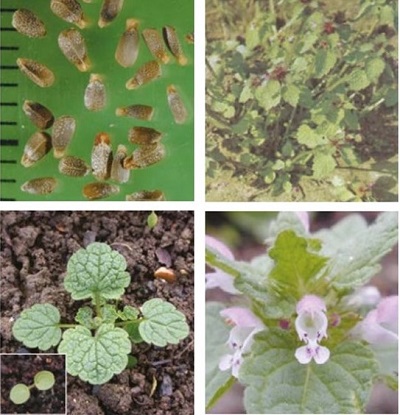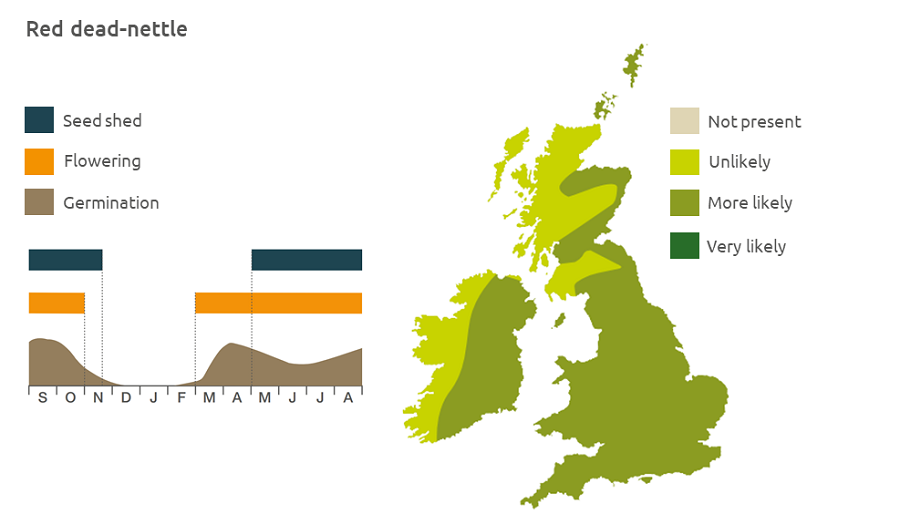- Home
- Knowledge library
- Distribution and biology of red dead-nettle in the UK
Distribution and biology of red dead-nettle in the UK
Red dead-nettle is a common arable broad-leaved weed, found throughout the UK. Discover how to identify and control it.
Overview
Red dead-nettle (Lamium purpureum) is common on arable land; it may be encouraged by minimal cultivation techniques. The plants may overwinter with green leaves but it is mainly annual. It can set seed before the canopy is developed. Non-flowering shoot tips can also re-root after spring cultivations and can go on to establish and set seed. Seeds can be locally moved by ants.
- It has value to biodiversity
Description
It is a downy, purplish-tinged bushy annual dicotyledon 10–40cm tall. The leaves are heart-shaped with toothed edges. The flowers are purplish pink and cluster in conspicuous whorls round the stem.
Key features
Young plant: The first true leaves are more triangular than those of henbit dead-nettle.
Plant: The foliage is often tinged with purple.
Lookalikes
Red dead-nettle may be confused with henbit dead-nettle; dead-nettles can be difficult to distinguish at the seedling and young plant stages.

Location and life cycle

Geographic distribution
Red dead-nettle mainly grows on sites with bare soil, such as arable land, gardens, soil heaps and demolition sites. It is generally a lowland species growing up to an altitude of 300 m, but has been found at 600 m.
Soil type
It prefers relatively fertile soils, sandy loams with moderate organic matter and rich in nutrients.
Seed statistics
- Seed longevity: >5 years
- Seed weight: 0.9 mg
- Seeds/flower: 4
- Seeds/plant: 0–1,000
Management
Although it occurs in both winter and spring crops, it is more common in early sown winter crops, suggesting it may be controlled by spring cropping.
For advice on herbicides, please speak with your agronomist or adviser.
When was this information last updated?
This page is based on content from the encyclopaedia of arable weeds publication. Since it was first released in 2008, the publication has been redesigned several times but not revised. However, it remains a good foundation for general information on the distribution and biology of weeds.

